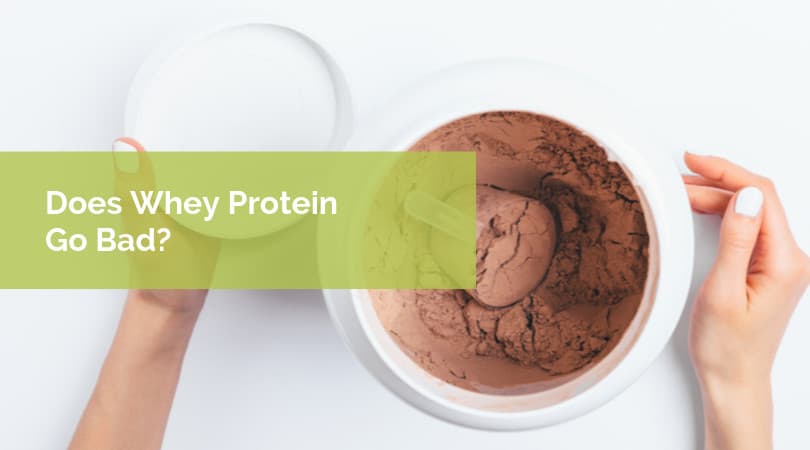
Admit it, you have at least one (or a few) containers of whey protein or other supplements gathering dust in the back of your pantry. Maybe you forgot about it or maybe you decided to save money by purchasing it in bulk and ended up with more than you needed. You are thinking about using it, but are probably wondering, does whey protein expire?
In this article, we’ll discover:
- What affects whey protein shelf life
- How long whey protein lasts
- Whey protein expiration dates
- Best way to store whey protein
What Affects Whey Protein Shelf Life
The four most important elements of getting the maximum shelf life out of your whey protein are:
- Moisture. Close the lid tightly on the container to prevent moisture from getting in and causing the whey to form clumps.
- Light can break down the vitamins added to whey protein.
- Whey protein will last longer when stored at room temperature away from high heat.
- Exposure to Bacteria and Germs. This mainly occurs by bacteria and germs from your hands or an unclean scoop getting into the powder and contaminating it. Be sure to wash your hands before getting a scoop of protein powder.
How Long Does Whey Protein Last?
Despite it being a consumable product, whey protein has a surprisingly long shelf life. As long as you are storing it correctly, you should be able to enjoy your whey protein without having to worry about it going bad before you’re done with the container.
Shelf Life Unopened
Whey protein shelf life is quite long, usually between 12 to 18 months. Many can last up to two years, so that should give you enough time to use up the product before it expires.
Shelf Life After Opening
How long is whey protein good for after opening? After opening the package, most whey protein can last for about 18 months stored at a normal temperature of 70 degrees Fahrenheit. Storing whey at a higher temperature of about 95 degrees decreased the shelf life to approximately 9 months.
The date on the package doesn’t mean that it needs to be thrown out on that date, as this is not an expiration date. Protein powders are usually dry, so they are not a major source of bacterial contamination like many other food products.
One thing to note is that if you want to maximize the nutritional benefits, then you will want to use the protein powder before the date on the package. Over time, the beneficial amino acids start to break down due to a chemical reaction between the protein and sugar in the product through a process called Maillard browning. One amino acid in whey called lysine is particularly sensitive to this chemical process. This suggests that old whey protein powder may not be as beneficial nutritionally as a fresh product.
In addition, many whey protein products contain vitamins or minerals. If you consume the product beyond the “best by” date, the nutrients inside may have degraded.
Whey Protein Package Dates
Whey protein, though it is consumed as a food, is technically categorized as a nutritional supplement. Therefore, the Food and Drug Administration does not regulate the information listed on the packaging, including expiration dates.
Manufacturers may choose to voluntarily include information such as “best by” or “sell by” dates. Let’s review the most common dates you will find on whey protein packaging to help you make informed purchasing decisions.
All whey protein products should have some type of expiration date on the label or bottom of the container. This can be a “use by,” “best by,” “expiration,” or “sell by” date. Sometimes these terms can be confusing, so here is a breakdown of commonly used food product dates as described by the USDA and what they mean:
Use By Date
“Use By” date is when a product should be consumed or thrown away. This is most commonly used for refrigerated foods such as premixed whey protein drinks. The food might be able to be consumed a few days after that date, but you should probably toss any items if it goes much beyond that.
Best By Date
“Best by” date helps explain when a product begins to lose quality. The taste and smell might be off if you use it beyond the “best by” date. However, this date doesn’t indicate when the food is no longer safe to eat, so it won’t be dangerous. The food can be safe for several months beyond this date, but it just might not taste that great. It is always recommended to consume a product on or before its listed Best By date though to maximize nutrient content and avoid any chance of stale or spoiled powder.
Expiration Date
“Expiration” date is when the food is no longer edible. This term is rarely used because it is difficult to predict how long a food will last. If you discover any expired whey protein in your pantry, it is best to discard it to prevent potential foodborne illness. There is a saying, “when in doubt, throw it out,” which is best for any expired products.
Sell By Date
“Sell by” date is mostly used for inventory management. This date is for the retailer of a product to determine its shelf life at the store. This has little to do with whether it is safe to consume once you bring it home.
How to Store Whey Protein
The best way to extend the shelf life of any protein powder is to store it correctly. Protein is particularly sensitive to heat, light, and moisture. Store the whey in a cool, dark place like a pantry or kitchen cabinet.
Avoid high heat by keeping it away from the stove or your car in the summer months. Be sure to replace the lid securely after use to prevent any moisture, light, or bacteria from getting inside.
Keep the protein powder in its original container. Protein powder containers are usually opaque intentionally to prevent light from getting in and destroying the product. Do not store the protein in a glass or clear plastic container for any extended period of time as the light and any potential heat will change the structure of the protein powder faster than in its original container.
For most protein powder products, the original package is designed to be opened and resealed regularly. Replace the lid as soon as you use the product. If it comes in a bag, be sure to seal the bag completely after each use.
If your protein powder has been mixed with any liquid, like in a smoothie, then you will want to store it in the refrigerator after opening it and drink it within two days. After that, it will likely start to taste terrible. For best results, drink your smoothie within a few hours of preparing it.
Does Whey Protein go Bad?
Despite its exceptionally long shelf life of over a year, you may still be wondering can whey protein go bad? The answer is yes, like all consumable products, whey protein does go bad.
Regardless of what the whey protein expiration or best by dates are on your whey protein powder, you should regularly check your products for signs of spoilage. Let’s examine what these signs are to help keep you safe.
Signs of Spoilage
If your whey protein has been hanging around your pantry for a while, look for signs of spoilage before consuming it. Common signs that your whey protein has gone bad are:
- Off smell or color change, most common is an acrid smell of spoiled milk
- Abnormal caking or clumping
- Strange taste, especially a “fishy” or cardboard-like taste
If you suspect that the whey is bad, it is best to throw it away. Don’t risk your health to try to salvage an old supplement. If you are ever unsure of the quality or safety of your whey protein, then it is best just to throw it away rather than risk your health further.
Bottom Line
Now that you know the answer to “does whey protein expire?”, it’s time to review how to make the most of your whey protein shelf life. Be sure to store your whey protein in its original container to prevent light exposure. Choose a room temperature place to store your whey protein away from high heat. Lastly, be sure to wash your hands before scooping whey protein powder and enjoy your long-lasting whey protein powder.
References
- Food and Drug Administration. Dietary Supplement Labeling Guide: Chapter 1. General Dietary Supplement Labeling.
- United States Department of Agriculture. Food Safety and Inspection Service. Food Product Dating.
- M. Dissanayake, T. Vasiljevic. Functional properties of whey proteins affected by heat treatment and hydrodynamic high-pressure shearing. Journal of Dairy Science, 2009;(92)4:1387-1397. https://doi.org/10.3168/jds.2008-1791.
- Tunick MH, Thomas-Gahring A, Van Hekken DL, Iandola SK, Singh M, Qi PX, Ukuku DO, Mukhopadhyay S, Onwulata CI, Tomasula PM. Physical and chemical changes in whey protein concentrate stored at elevated temperature and humidity. Journal of Dairy Science. 2016;99(3):2372-2383. doi:10.3168/jds.2015-10256.
- Persistent Tiredness and Chronic Fatigue: Causes and Symptoms - February 27, 2024
- Can A Protein Shake Replace A Breakfast Meal? - March 2, 2023
- Glutamine After Surgery: Does It Help With Recovery? - February 17, 2023

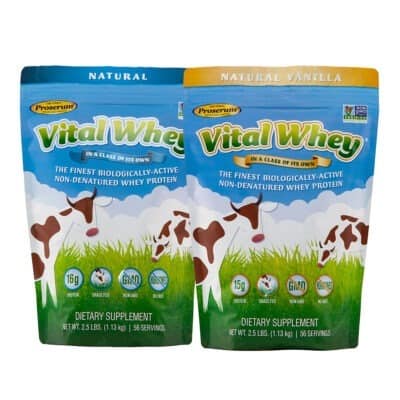
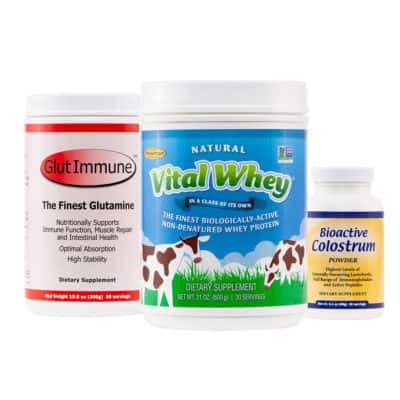
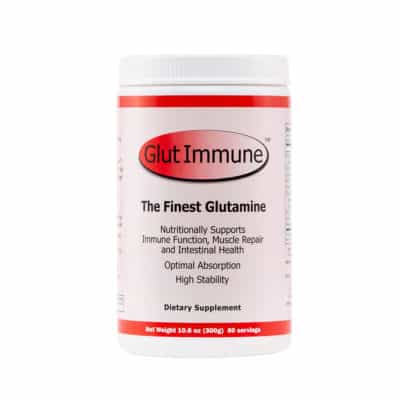
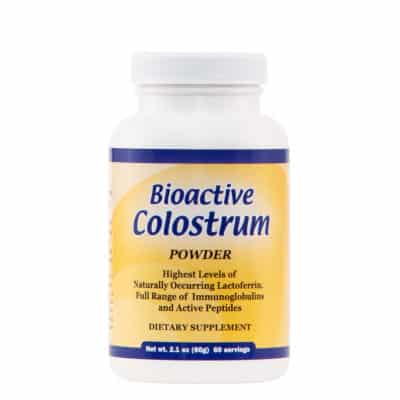
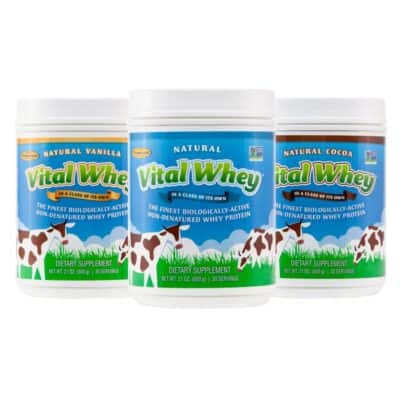
can u store an open container in the refrigerator